Overview
Rudranath Trek is more than a pilgrimage destination, it is a place where nature embodies Lord Shiva’s presence. The Rudranath temple is one of the five temples of the Panch Kedar circuit. Located in the Garhwal Himalayas at 3,600 m/ 11,800 ft in the Chamoli district of Uttarakhand, it is the toughest and longest of the Panch Kedar treks.
The remoteness of the Rudranath Trek adds to its mystique and gives you the ultimate Himalayan pilgrimage experience. Trekkers pass through dense forests, cross pristine streams, and traverse alpine meadows before reaching the sacred shrine. The trek spans around 30 km from the Sagar Village route, with elevation gains challenging even seasoned hikers.
Excited to venture on this trek that combines spirituality with adventure? Scroll down to learn about Rudranath opening and closing dates, detailed itinerary, trekking routes, how to reach, and the best time to visit.
Rudranath Opening Date and Closing Date of 2025
The opening and closing dates for the Rudranath Trek vary each year based on favorable and safe weather conditions. In 2025, the opening date for the Rudranath Trek is Sunday, 18 May. The temple will remain open for a brief period of 6 months, until 17 October 2025. Due to the extremely harsh winters, the trek remains closed during the winter and spring seasons. During this time, you can visit the Gopinath Temple, which serves as the winter seat of Lord Rudranath.
| Rudranath Trek | Date and Time |
| Opening Date | 18 May, 2025; 4:00 am onwards |
| Closing Date | 17 October, 2025; (tentative time) |
Reasons That Make Rudranath a Must-Do Pilgrimage in India
The Rudranath Trek is famous for its long walking distance, peaceful environment, and less-crowded pilgrimage destination. Apart from these factors, here are the top reasons that will make you want to lace up your boots and witness the mystic beauty of Neelkanth Mahadev’s abode:
Challenging and Exciting Trails
The Rudranath Trek offers three different routes that cater to trekkers of different experience levels. You can choose to start this trek either from Helang, Sagar Village, or Mandal Village. While Sagar is best suited for occasional trekkers, the trail from Mandal offers the thrill of crossing Naoli pass and tougher trail sections.
Trekking Through Kedarnath Wildlife Sanctuary
Rudranath Trek takes you through the lush forests of Kedarnath Wildlife Sanctuary. The faunal and floral varieties and forest trails of its protected area will leave you spellbound with their beauty. From its dense Rhododendron groves to expansive meadows of Pung, Lyuti, and Panar, it has everything to give you an incredible trekking experience.
360° Views of Himalayan Peaks
If you are looking for a trek that gives you the views of the most notable Himalayan peaks, the Rudranath Trek offers all in one place. At its highest point at Pitradhar, you get a 360° panorama of peaks like Hathi Parvat, Nanda Devi, Nanda Ghunti, Kamet, Trisuli, Chaukhamba, Neelkanth, Dunagiri, Banderpunch, and Rishi Pahar. These views accompany you throughout the Panar and Rudranath ridge, adding a touch of heaven to this spiritual journey.
Living Cultural Heritage
Rudranath embodies centuries of unbroken spiritual tradition amid the highest reaches of the Garhwal Himalayas. The temple houses the face form of Lord Shiva, one of the five body parts that emerged across the region. Local priests from the Bhatt and Tiwari communities from Gopeshwar maintain age-old rituals despite harsh mountain conditions.
The route starts from Sagar Village, where residents share stories of divine interventions and miraculous events associated with the temple. Their mountain lifestyle, from traditional stone architecture to agricultural practices, offers trekkers insight into Himalayan cultural resilience.
Trek Itinerary
Drive Distance & Time: 215 km; 7-8 hours
Altitude: 5,640 ft or 1,719 m
Highlights: A scenic drive through Srinagar, Rudraprayag, Karnaprayag and Gopeshwar
- Arrive at Rishikesh or Dehradun on day 0 from your city to begin your Rudranath Trek.
- Start your journey early in the morning after having a hearty meal. The total distance is approximately 213 km, taking about 7 to 8 hours to reach.
- Take the NH7 route towards Gopeshwar to reach Sagar Village via Chamoli.
- This route will take you through four of the five sacred sangams of Panch Prayag, offering beautiful views along the way.
- First, you will cross Devprayag, where Alaknanda meets Bhagirathi to form the Holy Ganga. Next comes the Rudraprayag, marking the confluence of the Alaknanda and Mandakini Rivers. Driving further, you will reach Karnaprayag, where the Alaknananda and Pindar Rivers merge. The fourth prayag on the way is Nandaprayag, where Alakananda combines with Nandakini River.
- After arriving at Sagar, check into your accommodation to have dinner and retire for the night.
Trek Distance and Time: 8.5-9 km; 5-6 hrs
Altitude Gain: 5,640 ft or 1,719 m (Sagar) to 10,000 ft or 3,048 m (Lyuti)
Today’s Difficulty: Easy
- On day 2, we will trek to Lyuti Bugyal, covering a distance of about 8.5-9 km.
- Considering the difficulty of the Rudranath Trek and its long distance, you can hire a porter to carry your equipment and luggage from Sagar Village.
- Starting from Sagar Village, the slope remains gentle, taking you through millet fields. Enjoy the views of the terraced agricultural lands on your way.
- You will find several large stones with arrow marks to indicate the route towards Rudranath. Follow these to proceed further into the dense forests of Kedarnath Wildlife Sanctuary.
- After a few km of trekking on the forest trails, you will reach the first stop at Chandrakoti. Refill your water bottles and relax at a dhaba before continuing your trek.
- After about 4 km from Sagar, you will arrive at the vast meadows of Pung Bugyal. Till now, you have gained about 400 m in altitude. Enjoy the greenery of the grassfields with horses and mules grazing on them.
- Further from Pung Bugyal, the slope changes from mild to steep, taking you through dense Rhododendron forests. The thrill of crossing small streams and bridges will make this trail section more exciting for adventure lovers. After about 3.5 km of trekking, you will arrive at Lyuti Bugyal via Ghimghima Pani.
- At Lyuti, you will find many dhabas and stay options for an overnight stay. Have your dinner here and rest for the night.
Trek Distance and Time: 12.4 km; 8-9 hrs
Altitude: 3,600 m/ 11,800 ft
Highlights: Panar Bugyal, Garhwal Himalayas and Rudranath Temple
- Start your day early after having breakfast. Refill your water bottles and pack refreshments, as after Lyuti Bugyal, you may not find any food stalls.
- After about a 2 km uphill trek on uneven and rocky terrain, you will arrive at the expansive Panar Bugyal. With an altitude gain of about 200 m at Panar, enjoy the views of prominent Himalayan peaks. These include Nanda Devi, Nanda Ghunti, Trishul, and Banderpunch, looking over the never-ending fields of velvet soft grasslands.
- Relax and soak in the beauty of this heavenly meadow. The interplay of clouds and sunrays over the snow-covered peaks will make you feel the presence of nature’s divinity.
- At Panar Bugyal, the dense forest begins to thin, and the trail opens into flower-filled meadows. After a continuous trek of 3 km and an altitude gain of about 400 m, you will arrive at Pitra Dhar. This is the highest point of the Rudranath Trek, at about 3,900 m. Pitra Dhar has small temples dedicated to Goddess Parvati, Lord Shiva, and Naryana. Devotees pray for their ancestors at this spot by stacking stones.
- No other trek can match the views from Pitradhar. You’ll enjoy a sweeping panorama of Uttarakhand’s highest Himalayan peaks, giving you a unique trekking experience.
- A further 1 km downhill trek will take you to Panj or Panch Ganga, indicating five consecutive water streams.
- From here, a 3-4 km gentle and gradual descent will take you towards Rudranath Temple. Offer your prayers at the temple and immerse yourself in the aura of this sacred site. You will find a small temple dedicated to Lord Yaksha beside the main temple. Rudranath temple is surrounded by ponds, namely, Surya Kund, Chandra Kund, Tara Kund, and Manas Kund.
- You can have your lunch at the nearby dhabas. If you want to attend the arti (8:00 am and 6:30 pm), there are a few stay and camping options near the temple.
- Post lunch, return to the Lyuti Bugyal via the same route to spend the night.
Trek Distance and Time: 8.5-9 km; 5-6 hrs
- Wake up early to witness the beautiful sunrise in the Lyuti Bugyal.
- After having a meal, descend back to the Sagar Village by retracing your steps through the dense forests. Do not forget to stop and enjoy the scenic views on your way downhill.
- After arriving at Sagar Village, relax at your accommodation. If time permits, you can explore the village and the simple life of the locals.
- At Sagar, you can also visit the Sakleshwar Mahadev Temple, which is frequented by the locals.
Drive Distance & Time: 215 km; 7-8 hours
Day 5 marks the end of your Rudranath Trek. You can either hail a taxi or a shared jeep to reach Gopeshwar to catch a bus/cab back to Rishikesh/Dehradun/Haridwar. Enjoy the beautiful views of the mountains en route.
Rudranath Trek Package Details
Price Inclusion
Accommodation for 4 nights: Stay is included from Day 1 to Day 4 (base camp to base camp).
Transportation from Rishikesh to Rishikesh): Transport from Rishikesh to Sagar Village and back is included.
Meals: Meals from dinner on Day 1 to breakfast on Day 5 are included.
Forest Entry and Permits: All required fuel charges, tolls, forest entry fees, and permits are covered.
Experienced and Certified Guides: A qualified, professional mountaineering-certified trek leader will accompany you.
Emergency Kit: First aid medical kits to ensure the safety, comfort and well-being of all participants.
Trek Certificate & HDT Badges: Receive a trek certificate and HDT badges to celebrate your adventure.
Price Exclusion
Meals during Transfer: Meals are not included while traveling to and from the trek starting points.
Emergency Evacuations: Any charges related to emergency evacuation are not included.
Personal Expenses: Any meals or accommodations outside of the provided itinerary or additional services not listed in the inclusions.
Personal Luggage Carrying: Charges for mules or porters to carry personal luggage are NOT included in fees.
GST (5%): Not included in the package cost.
Trekking Routes to Rudranath
Depending on your travel plans, fitness level, and itinerary, you can choose from three different trekking routes to reach Rudranath Temple. If you are planning to attempt the Rudranath trek as part of the Panch Kedar circuit, consider continuing the trek from Kalpeshwar or Madhmahewar Temple. However, if you’re planning to travel only to Rudranath, taking the route from Sagar Village is your best option. Let us have a detailed look at these three trekking routes to Rudranath:
From Kalpeshwar
The Kalpeshwar Temple is one of the important temples of the Panch Kedar circuit, where lord Shiva’s matted locks or ‘Jata’ are worshipped. The trek to Kalpeshwar starts from the Devgram Village, accessible from Rishikesh via Helang. The trail takes you through the confluence of the Alaknanda and Kalpganga Rivers and offers beautiful views of the Urgam Valley. After offering your prayers at Kalpeshwar Temple, the next day you will head towards the Bansi Narayan Temple.
From Bansi Narayan, a 10 km descent brings you to Dumak village, where trekkers rest before tackling the steeper sections ahead. Beyond Dumak, the forest thins and alpine meadows begin to dominate the landscape, taking you to Panar. The final stretch involves a challenging ascent along exposed ridgelines before reaching Rudranath Temple. This route takes 5-7 days with overnight stays in village homestays or campsites along the way.
From Sagar Village
The trekking route starting from Sagar Village (5 km from Gopeshwar) is the most popular route among tourists. The trail starts from the village and its beautiful terraced fields with an easy ascent. It takes you through several alpine meadows like Lyuti Bugyal, Pung Bugyal, and Panar Bugyal that serve as the perfect stopping points for taking trekking breaks or for overnight stays. This route gives you a perfect trekking experience as you tackle challenging terrains, water streams, and exciting altitudes. It takes about 4-5 days to complete the Rudranath Trek from Sagar Village. We will read more about this route in the next section.
From Madhmaheshwar
If you are planning to attempt the Madhmaheshwar Temple trek first, you can reach Ukhimath from Rishikesh. From Ukhimath, you can drive to Ransi, the base camp for the Madhmaheshwar trek. It will take about two days to visit the temple where Lord Shiva’s Navel is worshipped. After completing this 32 km trek via Bantoli, you can drive back to Ukhimath and further to Chopta (178 km). From Chopta, you can drive to Sagar Village (114 km) or Mandal Village (124 km) to start your Rudranath Trek. From Mandal, the trail takes you to Hansa Bugyal and Naola Pass via Anasuya Devi Temple (6 km), an important spiritual stop dedicated to the sage Atri’s wife. This route is very strenuous and recommended for experienced trekkers only.
Best Time to Visit Rudranath
The Rudranath Temple is open to devotees and trekkers for about six months each year. It usually welcomes visitors from mid‑April or mid-May through mid‑October. Keeping this factor in mind, the best time to visit Rudranath is during the Summer (May to early July) and Autumn (mid-September to mid-October). Here is a breakdown of what each season looks like in the Rudranath Trek:
Temperature: Daytime temperatures range from 13 °C to 27°C. During the night, the temperatures drop to -3°C to 12°C.
Weather: Pleasant weather during the day and comparatively colder nights. Overall, favourable for trekking activities.
Summer is regarded as the ideal time to attempt the Rudranath Trek between mid-May and June. The weather remains calm during the day, with cooler temperatures at night. If you are a nature lover, traveling during this period will offer you stunning views of snow-capped peaks against clear skies. The meadows of Panar and Lyuti become adorned with colorful wildflowers, enhancing the beauty of this peaceful trek. You may encounter snow at higher altitudes in May and June.
Temperature: Daytime temperatures range from 20 °C to 27°C. The temperature drops to 7°C to 11°C during the night.
Weather: The Rudranath region receives heavy rainfall, and the weather can be unpredictable, not fit for trekking.
The trails of the Rudranath Trek experience heavy and unpredictable rainfall during the monsoon months. This makes the region vulnerable to mudslides and flooding, resulting in challenging trekking conditions. The water streams on the Rudranath Trek swell, and the rugged trails become slippery. Therefore, we do not recommend planning your trip during this season for your safety. However, if you are a seasoned trekker seeking an off-season trek, the Rudranath Trek offers an enchanting monsoon trekking experience.
Temperature: The temperature during the day ranges from 10°C to 22°C. At night, the mercury drops down, ranging from -6°C to 5°C.
Weather: Cold but comfortable weather during the day. The nights are chillier, requiring better preparation.
Post-monsoon, the trails of Rudranath become more accessible with lush greenery enveloping the landscape. Late September marks the onset of autumn with crisp and cold weather, colouring the meadows and forests in the shades of amber. This is the perfect time to visit Rudranath Temple if you enjoy photography and videography. The season lasts till mid-October, marking the arrival of winter that comes with heavy snowfall and extreme cold. Therefore, trekking in Rudranath during winter is not possible.
Difficulty Level of this Trek
The Rudranath Trek poses moderate to challenging levels of difficulty, depending on the route and season you choose to attempt it. The trails require you to cross several small water streams, uneven stone-paved uphill tracks, and a ridge section (from Panar to Rudranath). It is suitable for visitors with prior high-altitude trekking experience and who are reasonably fit. Let us analyse the factors that make Rudranath the toughest trek amongst the Panch Kedar circuit:
Terrain Analysis
One of the major factors that makes the Rudranath Trek challenging is its rough and rugged terrain. Starting from Sagar Village, you will venture on comparatively easier trail sections. As you ascend, you will encounter well-marked but rocky tracks with some steps that can be as high as 1 to 1.5 feet. The path is lined with pointed and uneven stones that require careful footing while trekking. A single misstep can easily twist an ankle or cause another injury, so maintaining careful footing is important.
Beyond Pung Bugyal, the trail section requires you to cross small streams with large boulders. All these factors put a lot of stress on your knees and ankles. Hence, we advise you to carry good-quality trekking shoes and a pair of sandals to navigate wet sections.
Weather as a Difficulty Factor
Regardless of the season you choose to attempt the Rudranath Trek, the weather remains unpredictable in the region. At higher altitudes, you may experience sudden showers or low visibility due to fog. We advise you to keep a close eye on the weather forecasts and use GPX files for navigation to stay on the designated paths. Carry appropriate clothing layers to protect yourself from extreme cold at night.
Distance and Altitude Analysis
The Rudranath Trek is famous as the longest trekking destination of the Panch Kedar circuit. It covers a total distance of about 30 km to and fro, starting from Sagar Village. This makes it challenging, as you will be covering this distance on foot within a span of just 3 days.
Adding to its long distance, you will experience steep slopes and uphill climbs beyond Pung Bugyal. Each stop requires you to gain an altitude of about 200-400 m on average. Once you reach Pitradhar, the highest point of the trek at 3,900 m, the trail section goes downhill towards the Rudranath temple. To avoid any altitude-related sickness, add appropriate acclimatization days in your itinerary.
Preparation for Rudranath [Physical Fitness, AMS]
Now that you are all set for your journey to Rudranath Temple, it is important to follow some of the best practices before you plan. These practices help you prepare physically and mentally, giving you a smooth and wholesome trekking experience throughout your journey. Here are the tips that you must follow to adapt to the challenging terrains and altitudes of the Rudranath Trek:
A healthy and fit body combined with a calm mind helps you face any unwarranted challenges that come with the Rudranath Trek. Here is how you can prepare for this trek in advance:
Physical Preparation:
- Build endurance through regular cardio workouts like running, swimming, or cycling for 30-45 minutes at least four times a week
- Incorporate strength training with a focus on leg muscles to tackle steep inclines
- Include stair climbing in your routine to condition for the ascents
- Focus on core strength exercises to improve balance on uneven terrain
Mental Preparation:
- Prepare mentally for basic living conditions and limited amenities
- Practice meditation and breathing exercises to maintain calm during challenging sections.
- Research the route thoroughly to stay informed about daily distances and difficulties.
- Connect with previous trekkers online to hear firsthand experience of the Rudranath Trek.
- Practice positive self-talk techniques to overcome difficult moments on the trail.
Altitude sickness poses a real threat on the Rudranath trek, with elevations reaching above 3,600 meters. To avoid Acute Mountain Sickness (AMS), follow these acclimatization tips:
- Plan for shorter daily distances during the first 2-3 days of the trek.
- Spend at least one day in Dehradun or Rishikesh before moving to Sagar Village, which is at a higher altitude.
- Stay hydrated with 4-5 liters of water daily. Throughout the Rudranath Trek, you will find water streams to refill your bottles. At Lyuti and Pung Bugyal, there are food stalls to get refreshments.
- Avoid alcohol and tobacco products, which may worsen your health at higher altitudes.
- Recognize early symptoms of altitude sickness (headache, nausea, dizziness) and take timely measures. Descend immediately if symptoms worsen.
For a smoother trekking experience to Rudranath Temple, follow these tips and hacks:
- Carry small denominations of cash, as ATMs do not exist beyond Gopeshwar.
- Pack lightweight and quick-dry clothes in layers rather than bulky garments.
- Invest in high-quality and broken-in trekking boots with ankle support.
- Camping and overnight stays are banned at Panar Bugyal, so either plan an overnight stay at Lyuti Bugyal or choose a stay option near Rudranath.
- Avoid attempting the Panch Kedar Yatra solo as it involves a long trek duration and tough sections.
- Respect the locals and their customs. Avoid capturing photographs inside the Rudranath Temple as it is not allowed.
- Do not forget to carry original and xerox copies of ID documents and permits.
- Cooperate with the forest division officials at various checkposts. Adhere to the guidelines and regulations for your safety.
- Carry lightweight trekking poles to reduce strain on knees during descents.
- Pack high-calorie dry fruits and nuts for energy boosts between meals.
Trek Essentials
- 45-60 Ltr Bag Pack With Rain Cover & Comfortable Straps
- Hot and Cold Water Bottle Like Borosil and Milton
- Energy Bar, Dry Fruits, and ORS
- Personal Medical Kit
- 1 Pair of Sunglasses (UV Protected)
- 1 Neck Gaiters (Buff)
- Tiffin Box
- 2/3 Full Sleeves (Non-Cotton)
- 1 Full Fleece T-Shirt
- 1 Fleece Jacket (Woolen or Sweater)
- 1 Down Feather/ Hollofil Jacket
- 1 Waterproof Jacket/ Poncho
- 1 Pair of Thermal Inners (Upper and Lower)
- 2 Trek Pants (Avoid Shorts and Denim Pants)
- 1 Pair of Waterproof Gloves
- 1 Pair of Woolen Gloves
- Sun Cap
- Woolen Cap
- 4 Pairs of Cotton Socks
- 1 Pair of Woollen Socks
- 1 Waterproof and High Ankle Trekking Shoes
- 1 Pair of Floaters
- Hand Sanitizer and Sunscreen Lotion
- Toothbrush and Toothpaste
- Toilet Paper
- Quick Dry Towel
- Lip Balm and Antibacterial Powder
- Moisturizer
- Aadhaar Card, Pan, or Passport for Applying Permit
- Medical Certificate
- Self-Declaration Form
- Sleeping Bag
- Common Tent
- Mattress
- Dining Tent
- Camping Stool
- Walkie Talkie (For Team)
- Utensils
How To Reach Sagar Village
The nearest airport to Sagar Village is Jolly Grant International Airport in Dehradun. You can find many direct and connecting flights from cities like Delhi, Mumbai, Chennai, Kolkata, Bangalore, Ahmedabad, and more.
Upon reaching Dehradun, you can either take a bus or hire a private/shared taxi to reach Sagar Village. The total distance from Dehradun to Sagar is about 252 km, taking around 7-8 hours to reach, depending on road conditions.
The nearest railway station to Sagar Village is Rishikesh Railway Station, which connects Rishikesh town to most major cities in India. The railway station is about 215 km from Sagar and takes roughly 6-7 hours to reach by road. Alternatively, you can also reach Gopeshwar from Dehradun or Haridwar Railway Station.
If a direct train from your city to Rishikesh is not available, you can board a train or take a flight to Delhi. From Delhi, you can either travel by road to reach Dehradun/Rishikesh or take a bus to arrive at Rishikesh and then proceed to Gopeshwar or Sagar Village.
Route from Rishikesh (213 km): Devprayag – Srinagar – Rudraprayag – Chamoli – Gopeshwar – Sagar village
Route from Dehradun (252 km): Jogiwala -Ranipokhari -Rishikesh -Continues from Rishikesh to Sagar via Gopeshwar (5 km)
Sagar is a roadside village connected to Rishikesh and Dehradun via National Highway 7. You can find many local buses and taxis in Dehradun/Rishikesh that will take you to the Chopta-Gopeshwar Route. If you are on a budget, an affordable way is to travel via the railways to Rishikesh and then take a UTC bus to Gopeshwar.
Another option is to board a bus from Delhi’s Akshar Dham, ISBT Kashmiri Gate, or Anand Vihar Bus Stand to Dehradun. From here, you can find various UTC buses and taxis to reach Gopeshwar and further to Sagar Village.
Though these months are mostly cloudy, if you are lucky, you can enjoy the bright landscapes under clear skies. The campsites are covered in a blanket of snow, and near Judha Ka Talab, trekkers can even walk on the frozen lake.
Rudranath Trek Route Map
Rudranath Weather & Temperature
Religious Significance, Permit and Nearby Places
Spiritual Significance and History of Rudranath
The Panch Kedar Yatra finds mention in the text ‘Kedar Khand’ of Skanda Purana. It says that anyone who visits these five abodes of Lord Shiva is absolved of all his sins. Part of the Panch Kedar Circuit, the Rudranath Temple traces its roots back to the ancient Hindu epic, the Mahabharata. As per mythology, after the brutal war of the Kurukshetra, the Pandavas were filled with remorse and guilt of committing fratricide (killing of relatives) and Brahmanahatya (killing of saints).
To atone for these acts, Lord Krishna advised the Pandavas to seek forgiveness from Lord Shiva. As a result, the five brothers started their search for Lord Shiva from Kashi (Varanasi). However, Lord Shiva was very displeased by the bloodshed of the Kurukshetra war, and he disguised himself as Nandi (a bull) to hide in the Garhwal Himalayas. Pandavas were determined to find Mahadev, and they followed him even in the mountains to continue their search.
Bhima, the strongest of the five princes, recognized Nandi grazing among a herd of cattle. When Lord Shiva realized this, he immediately dived into the ground to hide but Bhima pulled the bull’s hinder part, revealing the hump on the surface. This site was later established by the Pandavas as Kedarnath. His other parts were revealed at four different places where his temples were established:
- Mukh (face) at Rudranath
- Nabhi (belly) at Madhmaheshwar
- Bahu (arms) at Tungnath
- Jata (hair) at Kalpeshwar
Impressed by the Pandavas’ persistence, Lord Shiva granted them forgiveness, helping them attain salvation. Discovered by Adi Shankaracharya in the 8th century, these temples were popularized as the Panch Kedar Yatra pilgrimage.
At Rudranath, Lord Shiva is worshipped as Neelkanth Mahadev with a 3ft inclined lingam, representing his face. The word ‘Rudra’ represents the fierceness of Lord Shiva’s power, meaning ‘the howler or the wild one’. Near the temple, the Vaitarani River (the river of salvation) flows as a testament to Rudranath Temple’s mythological past.
Nearby Places
In addition to the Rudranath Trek, here is a list of other tourist destinations that are a must-visit:
Gopeshwar: A hidden gem of Chamoli district, Gopeshwar is a beautiful hill town of immense spiritual significance. It is named after Lord Shiva’s Gopi (female devotee of Lord Krishna) form. Here, you can visit the ancient Gopinath Temple and Vaitarani Kund during your Panch Kedar Yatra.
Nandi Kund Lake: The Nandi Kund Lake is situated 9.5 km further from Rudranath Temple near the Dumak in the Urgam Valley. This sacred lake signifies the water body from which Lord Shiva drank in his bull (Nandi) avatar.
Anusuya Devi Temple: Situated 30 km from Chopta, this place of worship is dedicated to Mata Anusuya, wife of Sage Atri. The temple falls in the Rudranath trekking route from Mandal Village. You can also visit Atri Muni Ashram near the main temple complex.
Mandal Village: This small village is located 3 hrs’ drive away from Chopta. It serves as the alternate base village for the Rudranath and Kalpeshwar treks. Mandal offers comparatively difficult trekking trails to Rudranath, passing through Hansa Bugyal and Naola Pass.
Tungnath Trek: The trek to Tungnath Temple starts from Chopta near Ukhimath. This is an 8.8 km trek to the highest temple of the Panch Kedar Circuit. It represents the site where Lord Shiva’s arms are worshipped.
Chandrashila Trek: A 1.5 km short uphill hike from Tungnath Temple will take you to the Chandrashila Summit. This is a 4,000 m high peak on which Tungnath is established. It offers stunning views of peaks like Kedarnath Dome, Nanda Devi, Trishul, and Chaukhamba.
Permit for the Rudranath Trek
Due to the proximity of the Rudranath Trek and its trail section to the Kedarnath Wildlife Sanctuary and its difficulty level, you must acquire a permit to attempt it. However, no special trekking permit is required to complete this trek.
From 2025, EDC (ECO Development Council) has made obtaining permits mandatory for traveling into the Kedarnath Forest Division. The registration services will be available both online and offline. Travellers can also obtain them from the Ukhimath Forest Check Post or the Sagar Forest Check Post. You will have to pay a nominal fee as part of the registration process for the Rudranath Trek.
SCL, Foreign Permit & Vehicle
HDT is registered with the IMF, and we can cater to the needs of SCL for Government Employees. According to the rule, the government of India provides its employees with a prospect where they’re allowed to apply for a 30-day special casual leave in a calendar year to do trekking, hiking, or whatever adventure pleases them.
Mail us at info@himalayandreamtreks.in or call us at +91 80896 93825, if you want to avail SCL.
For foreign nationals, permit charges are different, and hence the overall package price is different for foreign trekkers. Connect with us before booking your trek.
- For 4-6 people Ertiga/Bolero or equivalent vehicle.
- For 7 or more people, Force Traveller.


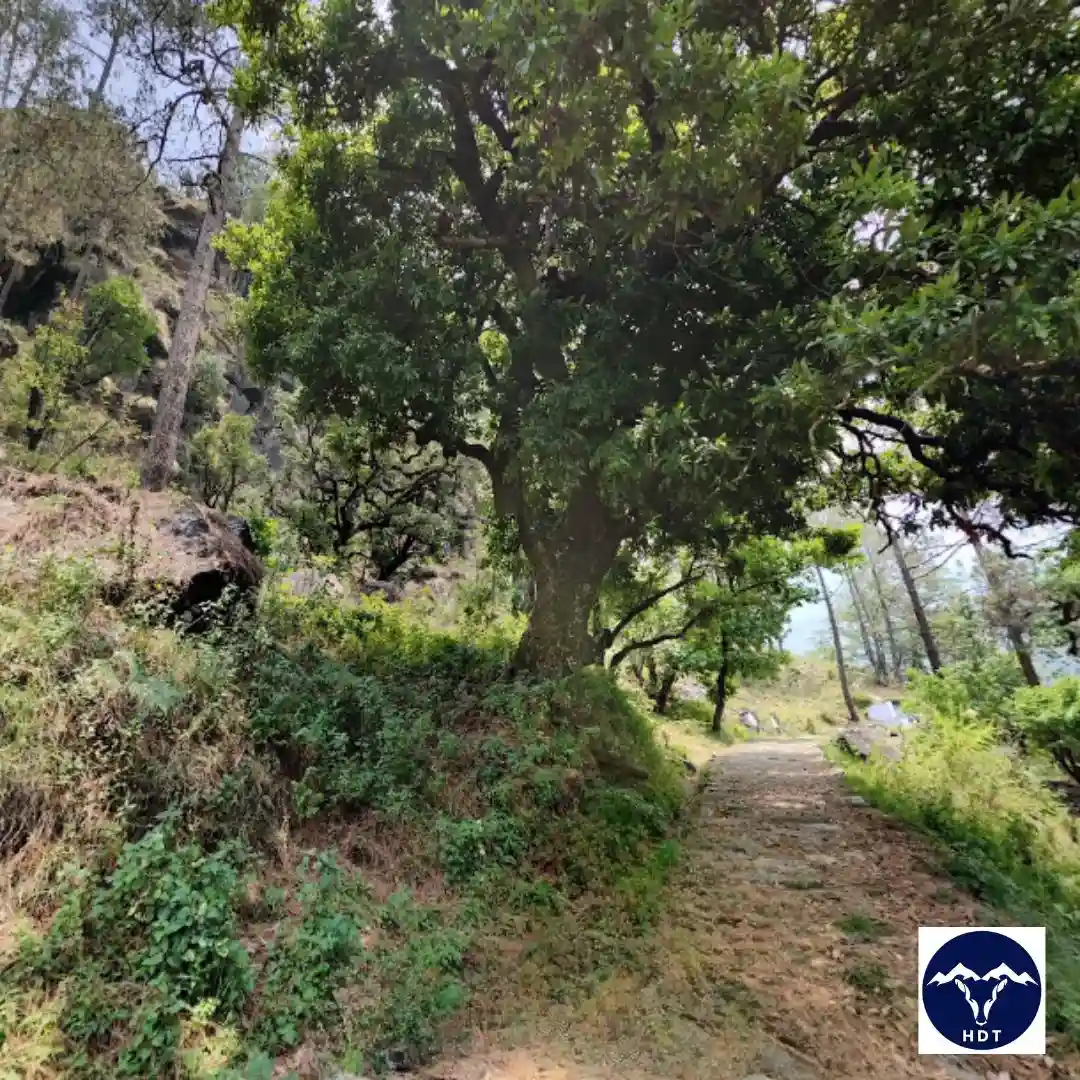
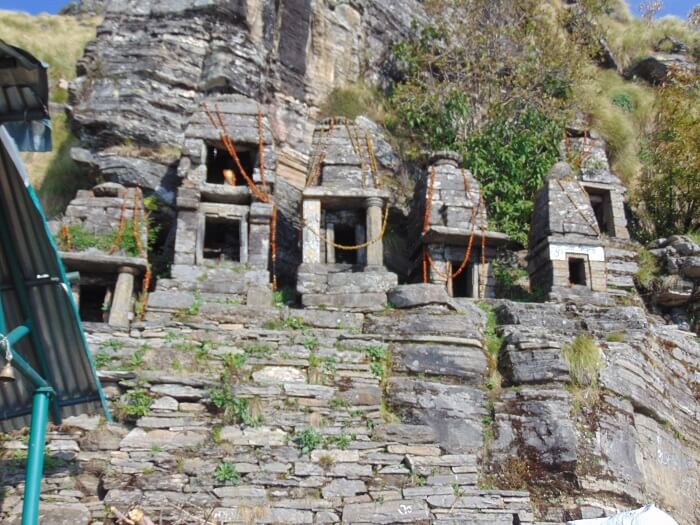


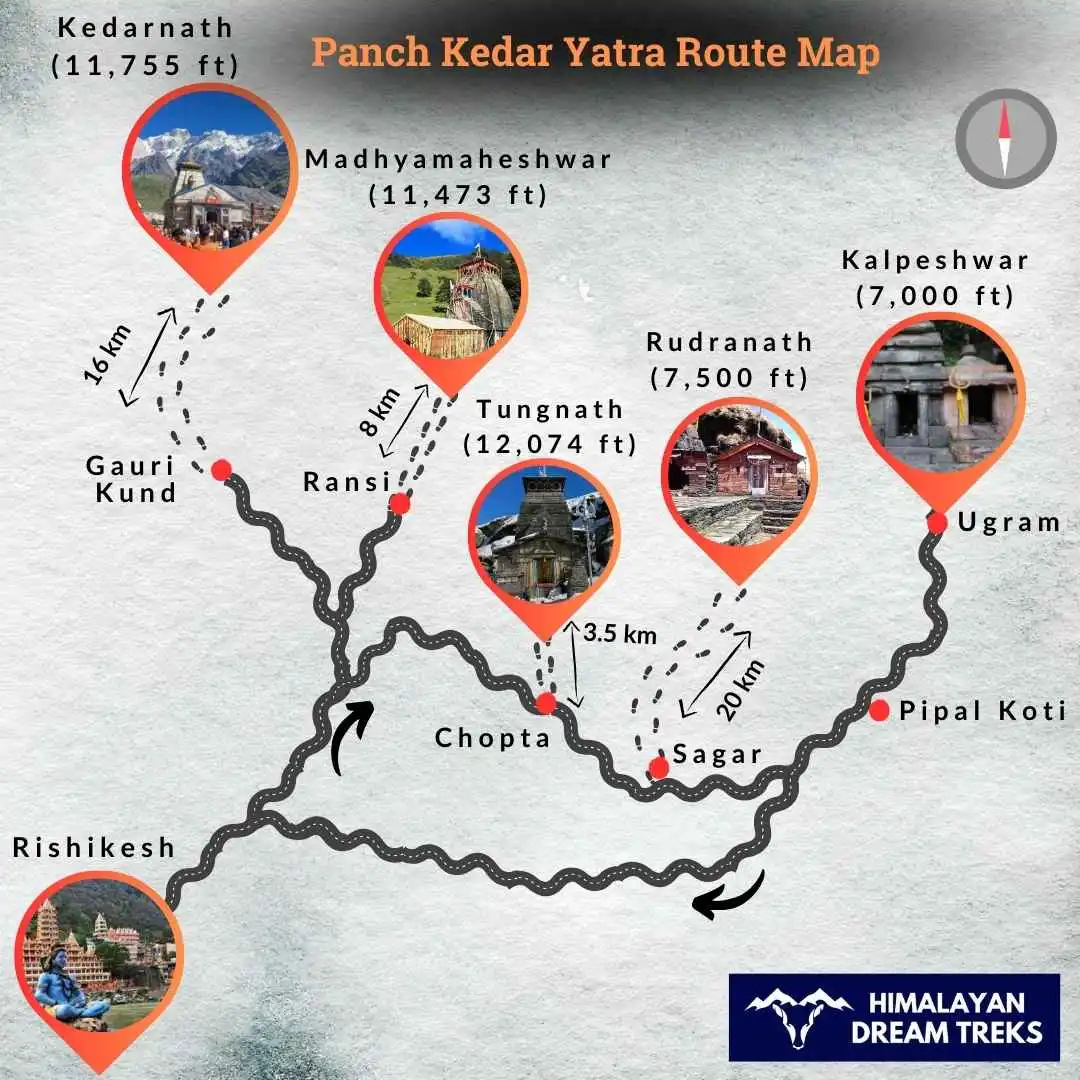


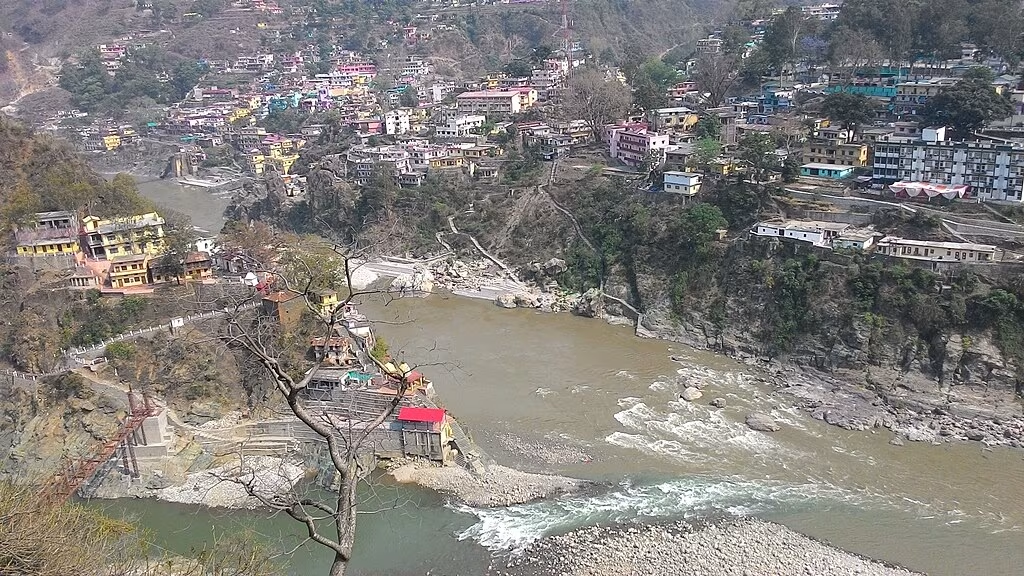

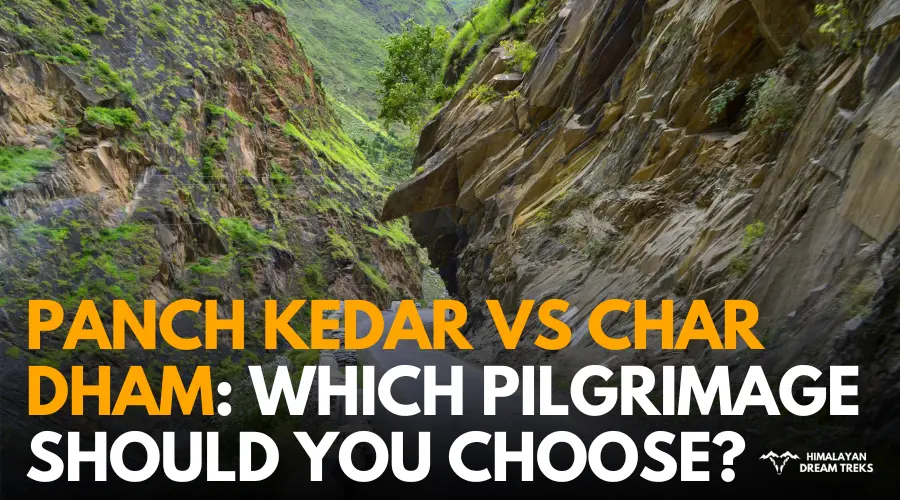

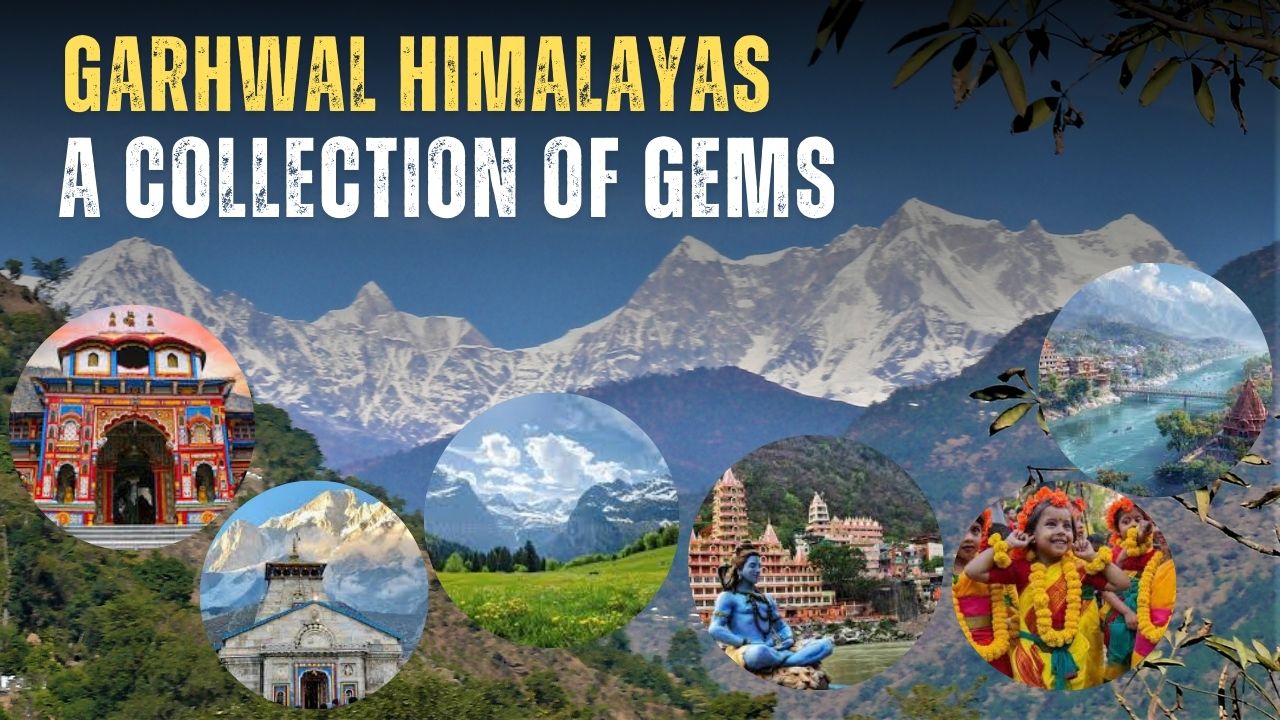

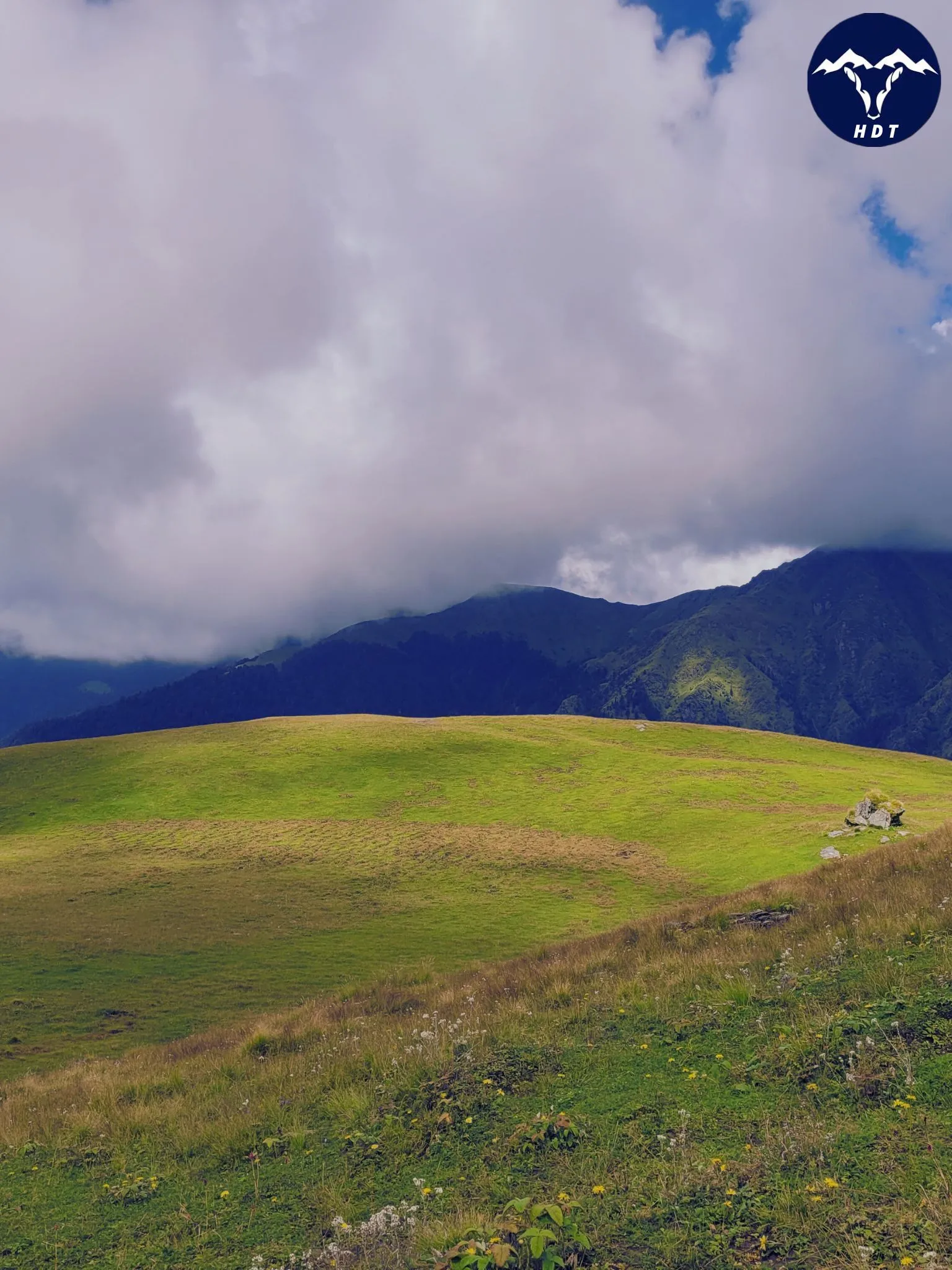
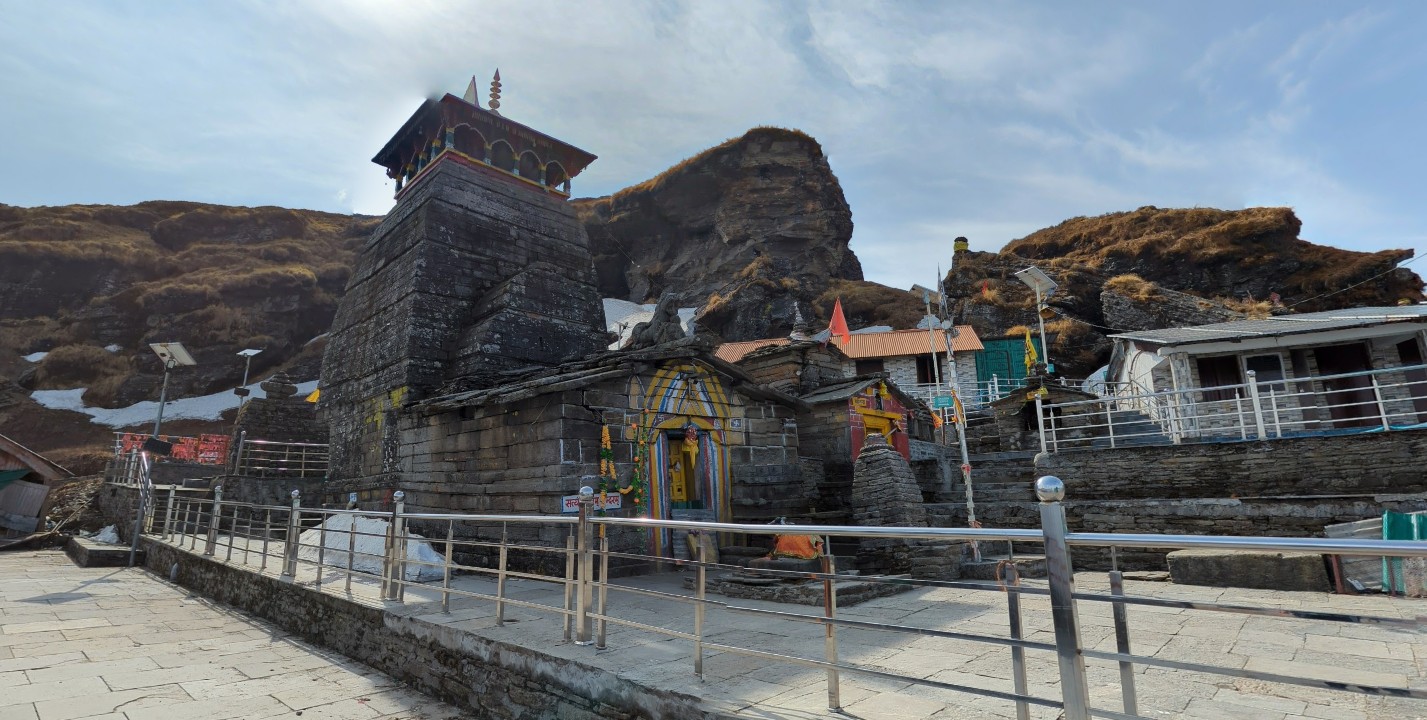
Leave a Comment